Crowdsourcing (CS)
von Tracy Micka


1. What is Crowdsourcing?
1.1. Definition
1.2. Different Types of Crowdsourcing
1.2.1. Microtasking
1.2.2. Macrotasking
1.2.3. Crowdfunding
1.2.4. Contests
1.2.5. Paid vs. Unpaid and Commerical vs. Non-Profit
2. Related Terminologies
2.1. Co-creation
2.2. Open Innovation
2.3. Citizen Science
2.4. Collective Intelligence
2.5. Human Computation
2.6. Outsourcing
3. Origins of Crowdsourcing
3.1. Participatory Culture
3.1.1. "ridiculously easy group forming" - Shirkey (someone else's quote)
3.2. Reputation Economy
3.3. Open-Source Software
3.4. Commerical
3.4.1. Ex. Amazon Mechanical Turk and Crowdflower
3.5. LIS World
3.6. Jeff Howe, Clay Shirkey, James Surowaki (wisdom of the crowd)
4. Benefits to Libraries
4.1. Engagement/Relationship Building
4.1.1. transparency
4.2. Augment Staff
4.3. Process Info Quickly
4.4. Diversity of Viewpoint
5. Benefits to Participants/Patrons
5.1. Intrinsic vs Extrinsic Motivations in a Free Choice Environment
5.2. Cognitive Surplus
5.3. Giving Back
5.4. Sharing/Participating
5.5. Maslow's Hierarchy of Needs
6. Pitfalls
6.1. Scale
6.2. Social Engagement vs. Crowdsourcing (CS)
6.3. Barriers to Recruitment & Participation
6.4. QC/Accuracy & Oversight
6.5. Not Everyone Suitable for Ideation
6.6. "Innovator's Dilemma"
6.7. Paradigm Shift for Librarians (experts)
7. Implementation: What Does the Literature Say?
7.1. Requirements for Successful Implementation
7.1.1. Lessons from Wikipedia
7.2. Focus on "Lead User"
8. New Directions for CS [in Libraries]
8.1. Purposeful Gaming
8.2. Wikipedia: General Shift from Content Creation to curation activities
9. How Libraries Are Using CS
9.1. Information Retrieval
9.1.1. Transcription/Resolution of OCR Errors
9.1.2. Classification/Tagging
9.1.3. Fixing Biblographic Errors
9.2. Ideation
9.2.1. Feedback/Problem Solving & Service Planning
9.3. Content Creation
9.4. Sharing/Engagment
10. How I Used CS for this Paper
10.1. Tweeps
10.2. Course Website
10.3. Collaborate Function on Mindmeister
11. For More Information
11.1. Conferences
11.2. Software
11.2.1. Scripto (Transcription)
11.2.2. NCSU's OSS Lentil
12. Possible Examples
12.1. Wikipedia / WikiProjects
12.2. Open Street Map
12.3. Library of Congress & Flickr Commons (Tagging)
12.4. The Metadata Games OSS Project (Tagging)
12.5. NYPL's What's on the Menu (Transcription)
12.6. InnoCentive
13. Why the Board Needs to Know about CS
13.1. Utility & Engagement
13.2. Implications for Variety of Fields
13.2.1. Technology/Engineering/Industry
13.2.2. Publishing (books, e-books, and news)
13.2.3. Social Services
13.2.4. Government
13.2.5. Research (data collection & user studies)
13.2.6. Ethics & Global Workforce Issues: "the new sewing machine"
